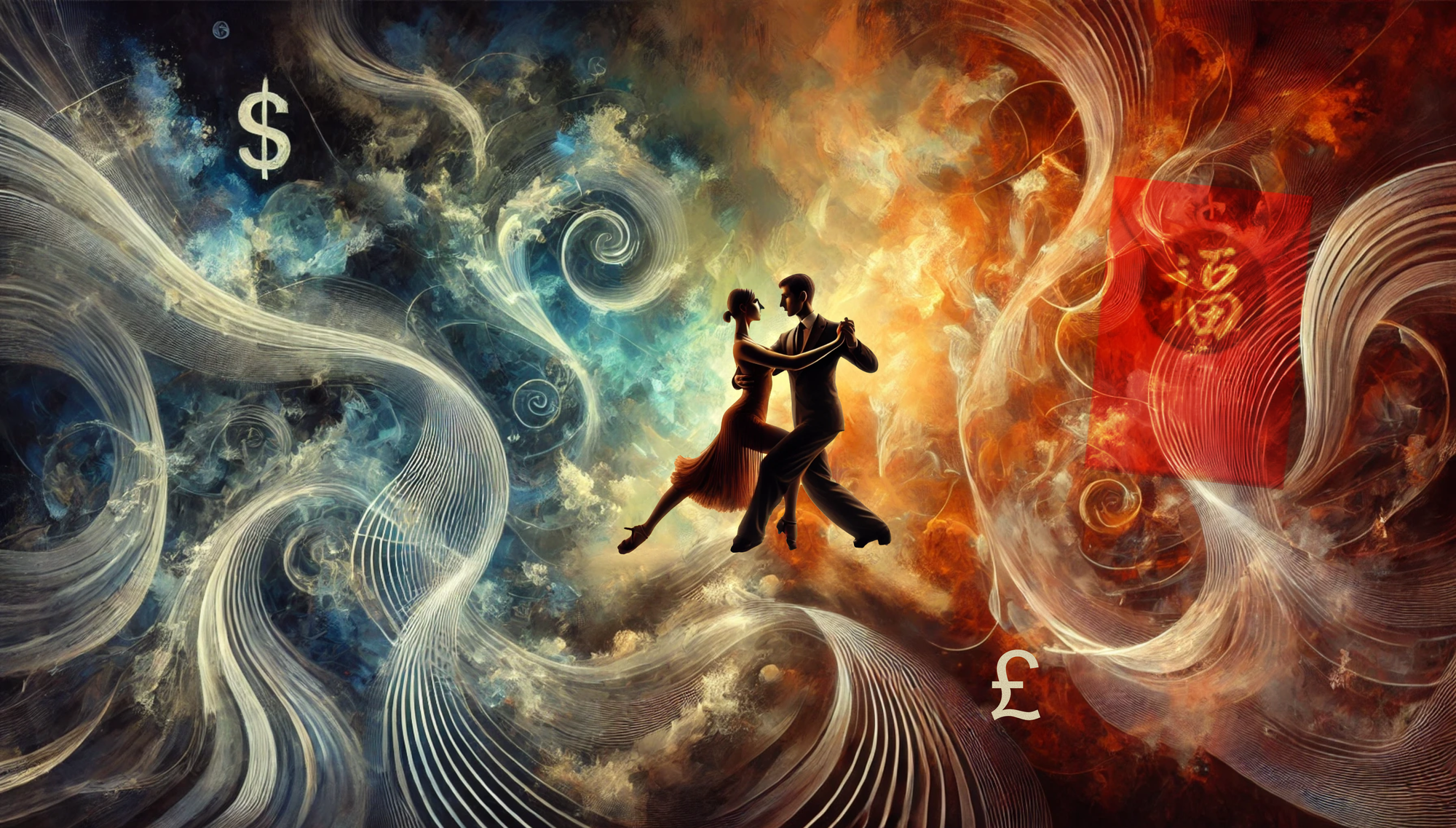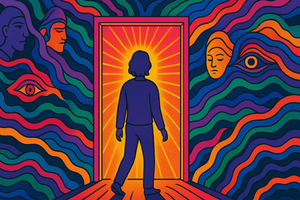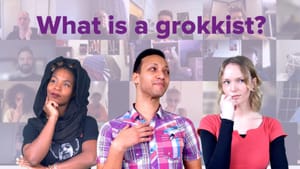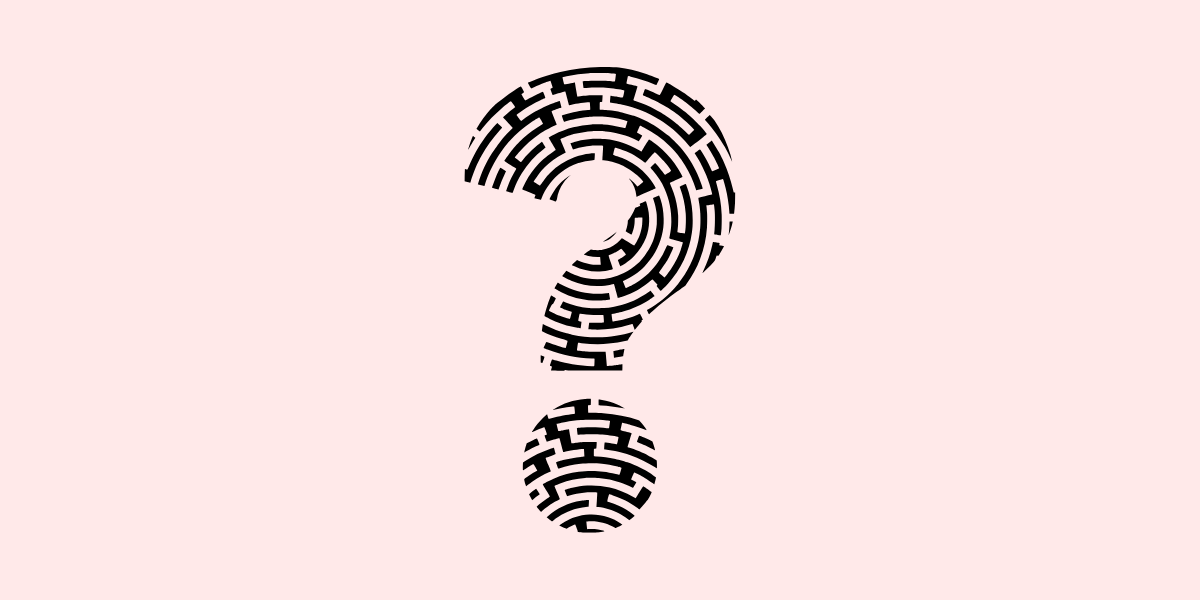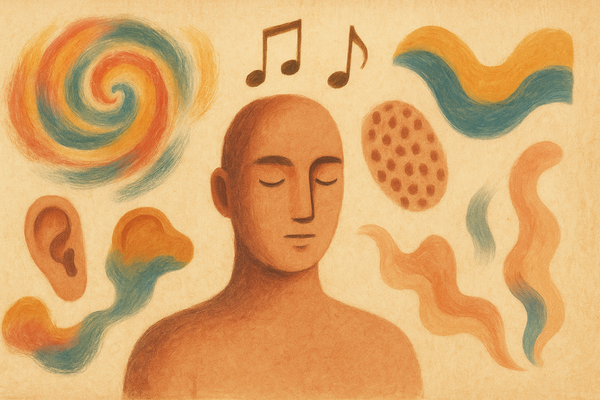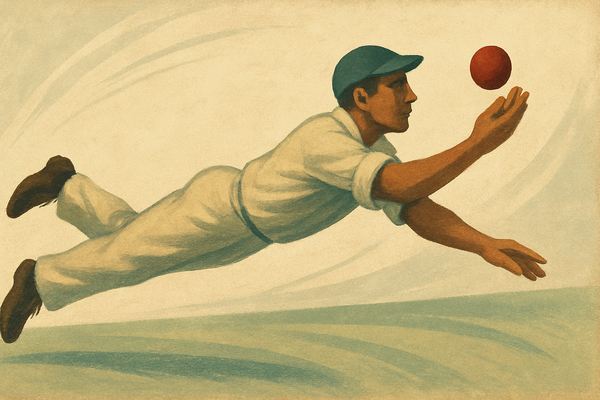Meeting the Money Monster
The day I realised I’d been living with a monster? That came as a shock.
Although... deep down, I suppose I’d known it all along.
My monster had a name. Money.
A Money Monster.
Have you ever met one?
It creeps in as that dizzy, queasy feeling when your bank balance is getting worryingly low. Or the hollow panic swirling in your gut when it feels like making ends meet is just beyond reach.
It’s the shadow behind those stories—the ones about bankruptcy suicides, about people pushed to desperate lengths… even selling body parts, literally, just to get by.
So—what does Money look like, in your world?
When I finally dared to inwardly look at mine, it showed up as this deep-sea horror with sabre teeth—a creature straight out of nightmare.

And it wasn’t just any old monster.
It was mine.
It had my fears woven into it. My memories. All those tight-voiced urgings I’d heard growing up—you’d better learn to make a living, or else…
It was made of all that. I could see myself in it.
So there we were, me and my Money Monster.
Turns out… we knew each other, in a way.
A relationship with Money?
What a strange idea.
And yet, here it was.
The more I sat with it, the more it made sense.
We humans do this sort of thing all the time, don’t we—give names to hurricanes, speak kindly to our plants, swear at our printers. We can’t help but humanise the things around us.
There’s even a word for that: anthropomorphise. Bit of a mouthful, that one.
But the point is—why not Money?
The Hidden Partner: How Emotions Shape Financial Habits
We say money makes the world go round.
We say it’s corrupt.
We give it weight, power, agency.
It moves nations. It breaks families.
We treat it almost like a character in its own right—a kind of shadow player in the human drama.
Once I realised that money wasn’t just an external thing but a presence in my world—something I had a relationship with—I began to wonder: how do I get to know it better?
Now, as a relationship coach, I tend to think of relationships as a kind of dance.
This habit comes from the decade I spent learning—and eventually teaching—Argentine Tango.
I often picture human dynamics like a slow-motion dance, unfolding move by move in an invisible space between people. It works in coaching, too. Whether it’s a couple in crisis or a client navigating change, imagining it as a dance helps me see the shape of what’s happening.
You can picture human dynamics like a slow-motion dance, unfolding move by move in an invisible space between people.
It also reminds me: any relationship, no matter how stuck it feels, is alive.
Which means—it can change.
So, there I was, imagining Money and me in this tangled, tense duet. A dance that felt tight, breathless, a little bit macabre.
And I found myself wondering:
Is there a way to loosen the grip?
To find a new rhythm?
But why was I even thinking about money in this way?
Well—before I started my business, I was convinced my financial difficulties came down to circumstance. I was a single mum, doing part-time admin work. That was a conscious choice—so I’d have energy left for my child at the end of the day.
Of course, those kinds of jobs came with predictably low pay.
But once my child was grown and I finally turned to starting my own practice, I thought: “This is it. My chance to finally earn well doing what I love.”
Then came the moment of setting my prices.
And I froze. Completely.
I loved the idea of building a thriving business. But the moment I had to say the numbers out loud? In front of an actual human being?
I couldn’t. My throat just closed up.
No amount of pep talks or mindset hacks made a dent. You know the kind—“just believe in yourself,” “just charge what you’re worth.” It all bounced off me.
The block I was facing wasn’t about business skills or confidence. It was deep.
Massive.
Monolithic.
And I had no clue what it was, or where it had come from.
So there I stayed—in Money Limbo.
Expenses right on schedule. Income… not so much.
And even when it did arrive, it evaporated fast.
Familiar?
The Wall Within: understanding our psychological money barriers
At some point, I stumbled across a book called Happy Money by Ken Honda—Japan’s so-called ‘Zen Millionaire’.
Now, I felt conflicted even reading the title.
There was something in his message I trusted—my gut said this man was sincere, wholesome even.
But when I saw those two words together—happy and money—something inside me flared up.
I was furious. I mean, properly, primally furious.
Whatever wise or reassuring things Ken had to say were drowned out by the sheer noise inside me.
I almost threw the book across the room. (I didn’t—too much reverence for books. But it was close.)
Why did those two little words—happy money—make me so angry?
Why was it so hard to even imagine that money could be something joyful, something wholesome?
That’s when I knew. I had to go deeper.
I had to find out what was hiding behind this invisible wall I kept hitting.
So I set off—not on a literal journey, but a kind of pilgrimage.
To trace the outlines of this Great Wall of Money inside me, and to see if there might be a way… beyond.
Financial footprints: reflecting on past money patterns
I started with the beginning:
Where do our money patterns come from?
If I’d constructed this wall so early, long before I ever thought consciously about money and psychology, then—how had it been built?
And almost straight away, I remembered something we all know, deep down:
None of us start from a blank slate.
By the time you hit adulthood, you’ve already had nearly two decades of money experiences—watching, absorbing, interpreting.
What you made of those early impressions becomes your personal map of How Money Works.
But here’s the thing:
The map is not the terrain.
No map can hold the wild richness of a living landscape.
It leaves things out. It simplifies. It distorts.
That’s the nature of maps—they’re reductions.
And yet… we get so used to navigating by them, we forget to look up.
To question whether the route we’re following still makes sense.
Or whether there might be more terrain waiting, just outside the margins.
That was me.
Each time I imagined stepping beyond the edge of my inner map, my throat tightened.
The thought running through my head was always some version of:
“That might be fine for other people… but I wouldn’t survive a step like that.”
The fear was that strong. That visceral.
So of course—I detoured. I delayed.
And I started wondering: where do these invisible limits come from?
How our unspoken money rules form a wall of silence
One big ingredient?
Silence.
Think about the conversations around money in your family growing up.
What got said? What got skipped over? What stayed completely unspoken?
There’s a term from hypnotherapy I love—it’s called a negative hallucination.
We know about hallucinations: seeing what isn’t there.
A negative hallucination is the opposite: not seeing what is.
And that’s what silence does.
It makes whole truths disappear.
So when you finally try to step beyond your personal Great Wall of Money, it can feel like stepping off the edge of the world.
Because in a very real sense—you can’t see what’s on the other side.
When you finally try to step beyond your personal Great Wall of Money, it can feel like stepping off the edge of the world.
Because in a very real sense—you can’t see what’s on the other side.
As I dug deeper, two things stood out as reinforcing this effect:
Our emotions.
And our sense of identity—our sense of who we are.
Our emotional landscape
The money messages you received as a child?
They didn’t just come as ideas.
They came bundled with emotion.
When a parent or teacher told you how to act around money, that instruction was rarely neutral.
It came wrapped in worry, or tension, or resentment—or urgency, or guilt.
And as children, we absorb that emotional charge like a sponge. Especially when it’s coming from someone we love.
So it’s not just the content of those early money lessons that sticks.
It’s the tone, the emotional atmosphere.
It’s like learning a song.
You might not understand the lyrics at first, but you’ll learn the tune.
And that tune becomes the backing track for how you relate to money later in life.
The feelings, the moves, the posture—it becomes the dance you know.
Identity and financial choices
Alongside rules about how to behave with money, many of us inherited something even more potent: a sense of who we are, financially speaking.
It’s remarkable how often money becomes the shorthand for identity.
Fairy tales do it in the first breath: “There once was a rich man who had three daughters…”
Right from the start, we learn to slot people into categories.
Rich. Poor. Comfortable. Struggling.
These labels become frames—frames that shape how we see ourselves.
Whatever your family's financial situation growing up, that context likely left a mark.
“We’re poor, but we’re proud.”
“We’re doing alright, but don’t get too comfortable.”
Or, “We always seem to just about make it—until we don’t.”
These stories sink in.
And over time, they start to sound like truths.
They create a kind of emotional Comfort Zone—not necessarily a pleasant one, but a familiar one.
You know the script. You know the soundtrack.
You’ve learned the dance.
So it’s no surprise that, as adults, we sometimes repeat those old moves without meaning to.
Take boom-and-bust cycles.
If that’s what your household lived through, again and again, you might recreate that rhythm later in life—unwittingly.
Why? Because it feels familiar.
And familiar, however painful, can feel safer than unknown.
When I looked at my own pattern, I saw it clearly:
In my money dance, I was the Scrounger.
Scraping by. Living on resourcefulness and determination. Becoming an expert at “making do.”
That was the world I knew.
I’d built habits, skills, even a kind of pride around that identity.
So naturally, any path that led outside it—like earning more—felt unreachable. Unimaginable.
That wasn’t something Scrounger Me could do.
From Battle to Ballet: Transforming the Money Relationship
Now, just to be clear—this isn’t about labelling yourself or anyone else with a one-dimensional identity.
You are not your money pattern.
You are not a “scrounger” or a “spender” or “hopeless with money.”
No one is just one note.
Like any piece of music, our emotional relationship with money is layered.
It’s nuanced.
It shifts.
Still, most of us do have a dominant refrain—a melody we’ve absorbed so well, we hum it without noticing.
But how do we begin to identify it?
One helpful lens comes from the world of psychology—specifically, Attachment Theory. Originally developed by John Bowlby, it maps how we relate to others, based on our early experiences of care and connection.
If your early caregivers were mostly warm and consistent, you’re likely to feel secure in relationships—even when connection ebbs and flows.
If their care felt unpredictable, you might find yourself clinging, second-guessing, or feeling anxious when bonds are under threat.
And if your caregivers seemed distant or disinterested, you may have learned to keep your own heart at arm’s length—to avoid needing anyone too much.
Now, here’s where it gets really interesting:
Money, too, can act as a kind of caregiver.
It helps us meet our needs. It keeps us safe.
So it makes sense that we’d develop attachment styles around money just like we do around people.
Do we clutch at it, fearing it might vanish?
Keep it at a distance, mistrusting it entirely?
Yo-yo between extremes?
Or relate to it with steadiness, trust, and enoughness?
To help others explore this, I created a simple quiz based on these patterns—a kind of Money Attachment Test.
It points to the four most common styles:
- Detached – distant and distrustful
- Clutching – close, but anxious
- Hot-and-Cold – come close, pull away, repeat
- Warm and Steady – relaxed, trusting, grounded
Knowing your money style isn’t about putting yourself in a box.
It’s about making the unconscious pattern visible—so that you can start to dance to a rhythm that suits you better.
When I first looked at my own money patterns…
I couldn’t deny what I saw.
The diagnostic was clear: I’d been keeping my distance from money as much as possible—just close enough to survive, but no closer.
And when I remembered that terrifying image—the deep-sea creature with sabre teeth—I thought, well… of course I was keeping my distance. Who wouldn’t, with a monster like that?
I was starting to see where I was.
But I didn’t yet know how to change the landscape—or how to walk free from it.
Living the dance
One thing that helped was realising how early all this gets wired in.
Most of us get introduced to money before we can tie our shoes.
But it’s not just a practical introduction—we’re soaking up emotion, energy, meaning.
We learn which feelings are allowed around money, and which are off-limits.
We learn what kind of people “we” are, and how we’re meant to live.
By the time you leave school, you’ve already built a relationship with money.
Not consciously, not deliberately—but it’s there, shaped by your family and community, charged with emotion and meaning.
So—does that mean you’re stuck with it?
Absolutely not.
But changing your tune?
That takes more than just reading a book or thinking a new thought.
It takes soul work.
It takes courage.
It takes experience—the kind that reaches right down to the body, that reshapes your sense of what’s possible.
So where do you begin?
New rhythms: psychosynthesis and financial healing
One way is through engaging directly with your inner world—your psychology.
By this point, I knew what my Money Monster looked like. I’d poured all my fear, all my pain, into that image.
But could that image change? Could I meet money in a different way—one that didn’t short-circuit my thinking every time?
Psychosynthesis gave me a framework.
In this model, we talk about sub-personalities—parts of you that split off in times of stress.
Not in a pathological way. More like a coping mechanism that runs on autopilot.
Sub-personalities are parts of you that split off in times of stress.
Not in a pathological way. More like a coping mechanism that runs on autopilot.
Like a subroutine in a computer programme, a sub-personality kicks in when triggered, and it does what it was designed to do—even if the original crisis is long gone.
Picture a tall person who’s learned to duck through every low doorway.
Now imagine them still ducking, even in a cathedral.
That was me with money.
Psychosynthesis doesn’t just name this pattern—it offers a path back.
It helps you reconnect with the original, wholesome spark that got buried.
It helps you re-integrate the part of you that’s been stuck in fear or defence.
And when that happens, something shifts.
The ‘monster’ stops running the show.
The joyful choice: discovering love and money through my child’s eyes
Let me tell you a story.
It’s a windy June day in England. My son and I are just leaving the swimming pool.
He’s tiny, still wet from the water, cheeks pink from the wind.
“Can I please have a ride, Mummy?”
I turn, and there it is—a bumper car ride.
And I think: Damn.
The pool trip already ate up most of this week’s money.
Without thinking, I say: “No.”
“Please, Mummy?”
I hear it again—that voice in my head saying, Save it. You’ll need it later.
It’s a voice I know well. It’s mine.
But this time… something shifts.
I hear that voice with new ears.
And I ask myself—what better use for that fiver could there possibly be, than giving this little boy a moment of childhood?
Tears spring to my eyes.
I remember my own seven-year-old self, longing for the same kind of ride, long ago but still vivid to my heart.
I open my wallet. One note left.
“Mummy, please?”
I hand it over.
He runs, gleeful.
I stand, frozen—joyful for him, scared for me.
But I’ve never regretted it.
Not once.
That day, I crossed a line.
I moved from “Scrounger” to “Loving Mum.”
I let love lead.
Stepping into Growth: Embracing Financial Change
That shift realigned my compass.
But as you can imagine, “Loving Mum” wasn’t quite enough to build a thriving coaching business.
So I tried the intellectual route.
Read books. Studied history.
It was fascinating—but it didn’t touch the fear.
Money still felt monstrous.
Next, I tried asking the question that made me wince:
What would make my Money smile?
Even asking it felt strange.
Smile? Really?
My imagination offered a toothy deep-sea grin. Not comforting.

But I kept going.
I knew—the only way out was through.
Back to that dance floor. Me and the Monster.
Only now, I came as a Dragon Whisperer.
This time, not just for my clients—but for myself.
Because I knew the big secret about inner monsters:
They’re exiles.
Outcasts.
Parts of us that we’ve banished because they were too much to bear.
And the only thing that can reach them?
Is love.
The big secret about monsters: they’re exiles. Outcasts.
Parts of us that we’ve banished because they were too much to bear.
And the only thing that can reach them? Is love.
I knew my Money Monster could laugh. Could cry.
Could transform.
Because it wasn’t really a monster. It was… me.

Did I leap straight into Happy Money?
Did I manage to transform my Money from a fang-mouthed creature to a benevolent luxuriant Goddess of Abundance in a few deft moves?
No.
I wish.
First, my Money monster turned into an old spinster aunt. Tight-lipped. Stingy. Resentful.
Still—not a monster.
Still—human.
So I asked her, gently, What would make you smile?
“Joy,” she said.
Plain and simple.
That day, something shifted.
I wasn’t the Scrounger anymore.
I became the Apprentice Magician.
Still learning. Still exploring.
Still finding ways to let love reach more of those hidden overlooked places inside.
A new dance with money
This journey isn’t over.
Even now, as I help others reimagine their relationship with money, I still meet my own old echoes.
Little pockets of pain I once packed away for later.
And yet—things have changed.
I no longer feel I have to race. Or brace.
I can name a price.
I’ve heard a client say:
“Great, I’ll send the money over.”
“I’m so excited to work with you!”
And that’s progress.
Because growth often happens like the land itself—by gradients.
One contour at a time.
Landmarks. Moments. Gentle shifts.
Yes, there’s a whole cultural history around money.
Yes, it’s worth exploring.
But the story that lights me up the most?
The one we haven’t written yet.
What might you create, if your money story began to change?
What if you could re-enchant money? What new tunes might you write into your Money Song?
What if money could be reclaimed as something human?
What if your dealings with money could become a beautiful dance?
What if we let it?
Meet Your Money Monster
Curious what your money story might look like… if it had teeth?
This playful AI tool* will help you explore your relationship with money and generate two images: one of your Money Monster as it appears now, and one as it could look after transformation.
It’s weirdly accurate, surprisingly tender, and sometimes a little spooky (in a good way).
* Requires ChatGPT account
Not sure how you usually relate to money? Take the quiz.
This short self-assessment helps you identify your predominant ‘Money Monitor Mode’ — whether you tend to distance, clutch, avoid, or befriend. Based on your answers, you’ll get a gentle mirror of the patterns you may have inherited or internalised.
You might be surprised what shows up when you pause to look.

